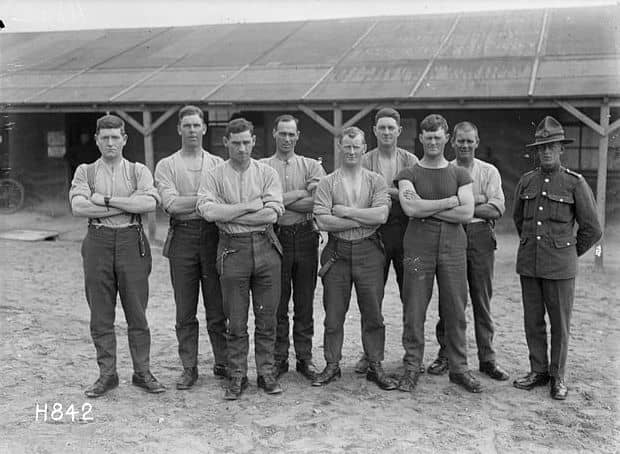The Spanish flu is considered the worst pandemic in history. It killed between 50 and 100 million people, according to current estimates. And it accomplished the feat in only one year, between 1918 and 1919. There have always been flus floating around. So what made this particular virus different -and deadlier?
Here are six unique characteristics of the Spanish flu.
1. Age: the Spanish flu killed the young and healthy

Most flu viruses hit children and seniors the hardest since they have weaker immune systems. But the Spanish flu killed mostly young, previously healthy adults. That sets this virus apart from almost all other flu strains.
During the pandemic, 99% of all cases were under 65.
A Swiss doctor wrote that he “saw no severe case in anyone over 50.”
And the people that were hit the hardest were those that are the safest from other flus: the ones in the 20-40 age group. During the outbreak, they accounted for more than half of the deaths.
But why?
Scientists have speculated about that for decades.
They wonder if the older population was immunized since they had been exposed to a nasty flu outbreak in 1889 (which killed 1 million people).
Or if it was because the Spanish flu ravaged military camps, in which most soldiers were in their twenties and thirties.
But those hypotheses were somewhat discredited in 2009. That year, a first-cousin of the Spanish influenza, (H1N1)pdm09, spread through the world.
Like the Spanish flu, it belongs to the family of H1N1 viruses. And it, too, over-targeted young adults and skipped people older than 65.
A likely explanation for the young death toll could be that the 1918 virus triggered a severe response from the immune system.
Young adults have stronger immune systems. So their triggered bodies would have attacked the virus over-zealously. But the intense response backfired.
The virus attached itself to the lungs. And when the body attacked the virus, its extreme response further inflamed the lungs. The combination proved fatal.
But that is just a hypothesis. Why it killed mostly the twenty-thirty-year-olds remains a mystery.
Read also: How Many Died From the Spanish Flu? By Continent and Country
2. Seasons: it is always Spanish flu season
Another oddity. Most flus limit themselves to winter. But the Spanish variety circulated during all seasons, even summer.

The pandemic hit the world in three main waves.
The first wave began in Spring 1918 and lasted until early July. So it did include some summer weeks.
When it abated, it seemed like it would go away until the winter, like the common, seasonal flu.
But it only gave a respite for a few weeks. It reappeared with a vengeance at the end of summer (end of August).
This second wave was the deadliest, wrecking most havoc during the fall of 1918.
And then came the third wave, which did follow a more flu-like pattern. It began the last month of winter and ended during the 1919 spring.
Some believe there were a few milder waves in 1920. But by then, most humans were immunized against the virus, so the mortality rates were low.
3. A very contagious flu

The new virus was quite contagious.
Every person that catches the common flu transmits it to 1,3 other people, on average. Covid-19 is more contagious since it spreads to 2,5 people.
But during the second wave of the Spanish flu, every infected person transmitted it to 3,75 other people. So every time one person got the flu, almost 4 others were soon infected too.
Furthermore, in cramped spaces, the contagiousness doubled: each person infected 7 or more.
That explains how the Spanish flu was so successful in WWI conditions. Tens of thousands of soldiers were cramped in military camps, ships, trains, and in the trenches at the front line.
And when those soldiers moved en masse from one continent to another, they spread the virus everywhere.
Read next: The Key to the Spread of the Spanish Flu: the War
4. So many symptoms

Most garden-varieties of flus come with symptoms similar to that of a bad cold. There is coughing, fever, headache, perhaps chills, and difficulty breathing.
Those symptoms were indeed present in some patients that caught the Spanish flu. But many others presented a puzzling array of symptoms. Many had hemorrhages, some were paralyzed, others had mental issues such as depression and suicidal thoughts.
Read more: What Was the Spanish Flu, And Its Symptoms
5. Virulence: A swift death

This virus killed people quite fast.
With normal influenza, those who die have been sick for weeks. Covid-19, too, takes at least a week to kill its victims.
But the Spanish flu killed people within hours. Someone that developed symptoms in the morning could be dead before the evening. Other patients fought the disease for 3 or 4 days before dying.
6. High mortality rate

The virus was also far deadlier than the normal flu.
The common variety kills 0.1% of the infected. Meanwhile, the Spanish strain killed between 2.5 to 5%.
But that is a worldwide average. The actual death rate varied greatly from country to country.
And since not everyone was keeping accurate records in the middle of the disaster, it is difficult to pinpoint the exact number of deaths.
But the U.S. military camps did keep reliable records: 5% of their sick died.
Other communities were far less fortunate; 90% of their population died. Entire villages in Alaska were wiped out during the pandemic -in a matter of days.
So the Spanish flu did have unique characteristics. And its contagiousness and high mortality rate would always have turned it into a scary pandemic. But it was the combination of its unique traits with the war conditions -the virus struck during World War I- that allowed it to become the mother of all pandemics.
Don’t miss:
The Real Origin of the 1918 Flu Pandemic
What Worked Against the Spanish Flu, and What Stopped It
More Articles






